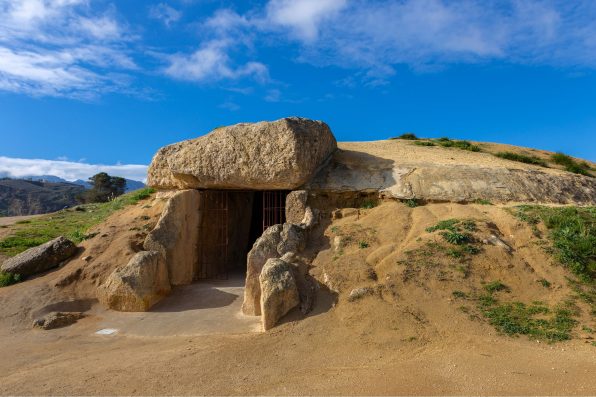Neolithic People Constructed The Menga Dolmen About 6,000 Years Ago Using 32 Massive Stones, And Now Scientists May Know How The Heavy Monument Was Built

The Menga Dolmen is an ancient structure consisting of 32 enormous stones. The monument is built into the side of a small hill located in southern Spain. Previously, some studies have dated its construction to about 6,000 years ago.
The stones are all bigger than the ones used to make Stonehenge. They form a dolmen, or a single-chamber tomb, that is approximately 82 feet long and 16.4 feet wide at the widest point. The largest stone weighs around 150 metric tons, which is roughly the same as a blue whale.
“I tell the students in my lectures…the weight is more than two Boeing 747 airplanes combined, the ones that fly across continents and so on, fully loaded with fuel and passengers,” said Leonardo García Sanjuán, a co-author of a new study on the monument and a professor of prehistory at the University of Seville in Spain.
So, the Neolithic people who built the structure must have been highly skilled and used advanced engineering techniques to transport and place such large, heavy stones.
The monument has remained stable for thousands of years in almost the same condition as when it was built.
A team of researchers from across multiple institutions in Spain has developed several theories as to how the Menga Dolmen was built and why certain techniques were employed.
The stones that make up the walls of the chamber were not perfectly vertical. They were tilted inward at a consistent angle to create a chamber shaped like a trapezoid. This made the building narrower at the roof than at the floor.
The team suggested that the stones were carved from a site around a mile away from the monument. Then, the rocks were dragged on sledges over a wooden trackway.
When part of the hill had been dug out, workers would wedge each stone tightly into the bedrock to create the walls.

Eduardo Estellez – stock.adobe.com – illustrative purposes only
They used tools such as counterweights and ramps to pack in the stones, as well as plumb levels and framing squares to achieve a specific level of accuracy. The pillar stones were positioned in a similar way.
“The stones were placed and carved so that they would be slightly inclined and perfectly adjusted to each other. Each block has to fit exactly with the others, and each block supports the others. All the stones are locked into one another and embedded into the bedrock,” said García Sanjuán.
The work was finished by placing five huge stones on top to form the roof. The resulting building was covered with a mound of soil to insulate it from wet and cold weather. It also added stability to the construction.
It is unclear exactly how the dolmen was used, but it most likely served as a temple or tomb, although few artifacts have been found within the monument.
Overall, the Menga Dolmen is a unique example of “early science” and “creative genius” in a Neolithic society when agriculture was still relatively new and no written language existed.
Sign up for Chip Chick’s newsletter and get stories like this delivered to your inbox.
More About:News





